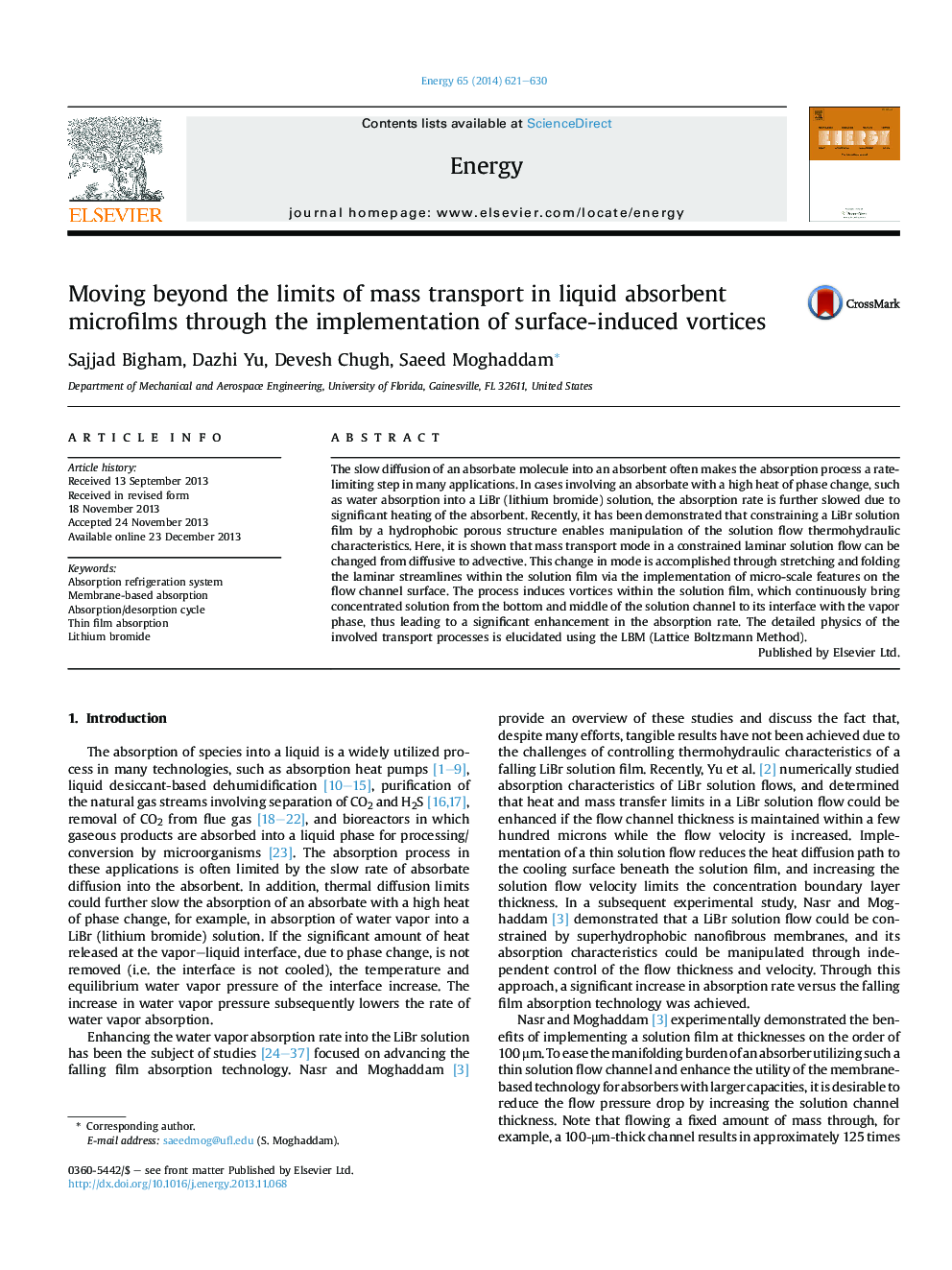| Article ID | Journal | Published Year | Pages | File Type |
|---|---|---|---|---|
| 1732719 | Energy | 2014 | 10 Pages |
•A method for mixing an absorbent film to significantly enhance its absorption rate.•Mixing through implementation of microstructures on the flow channel wall.•Impact of microstructures dimensions on mixing and the absorption rate.•An unprecedented absorption rate at a low flow pressure drop.
The slow diffusion of an absorbate molecule into an absorbent often makes the absorption process a rate-limiting step in many applications. In cases involving an absorbate with a high heat of phase change, such as water absorption into a LiBr (lithium bromide) solution, the absorption rate is further slowed due to significant heating of the absorbent. Recently, it has been demonstrated that constraining a LiBr solution film by a hydrophobic porous structure enables manipulation of the solution flow thermohydraulic characteristics. Here, it is shown that mass transport mode in a constrained laminar solution flow can be changed from diffusive to advective. This change in mode is accomplished through stretching and folding the laminar streamlines within the solution film via the implementation of micro-scale features on the flow channel surface. The process induces vortices within the solution film, which continuously bring concentrated solution from the bottom and middle of the solution channel to its interface with the vapor phase, thus leading to a significant enhancement in the absorption rate. The detailed physics of the involved transport processes is elucidated using the LBM (Lattice Boltzmann Method).
